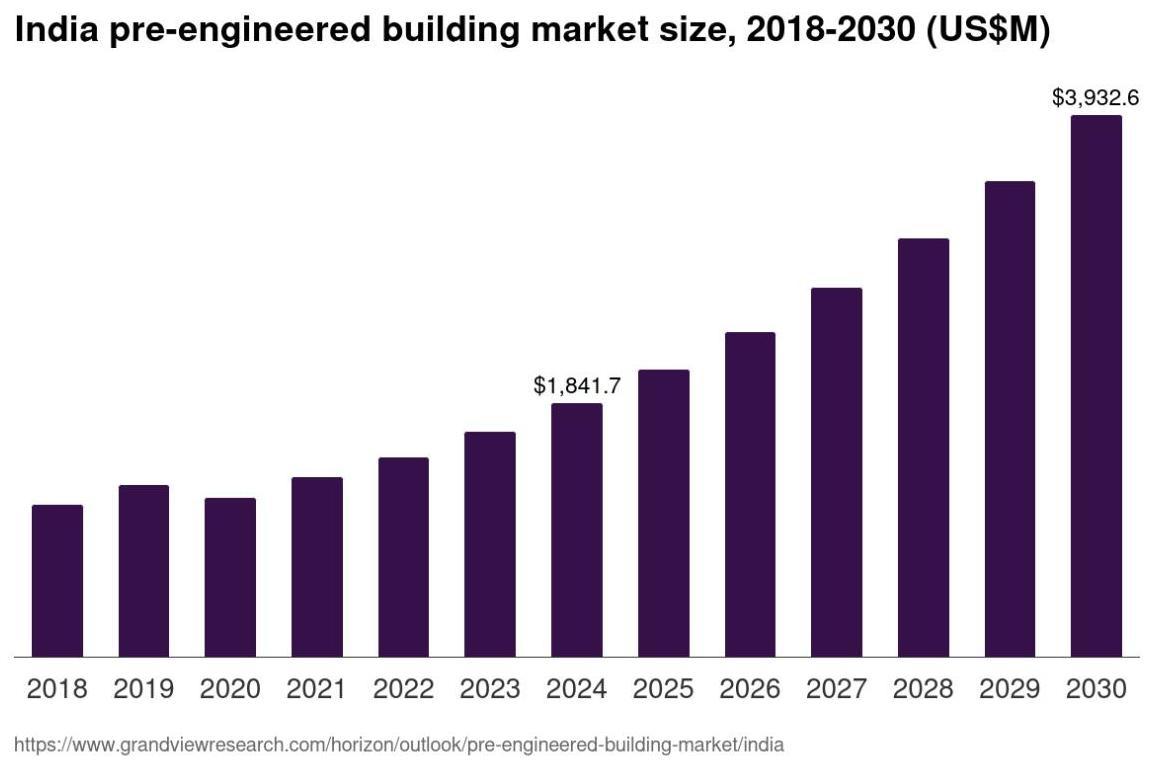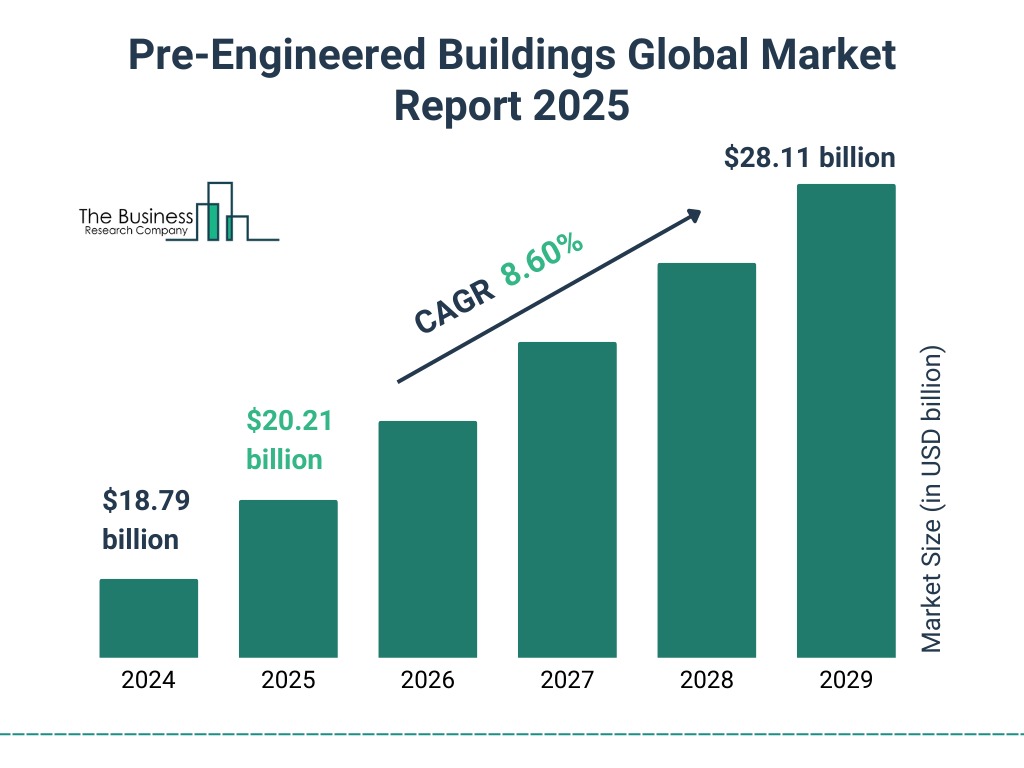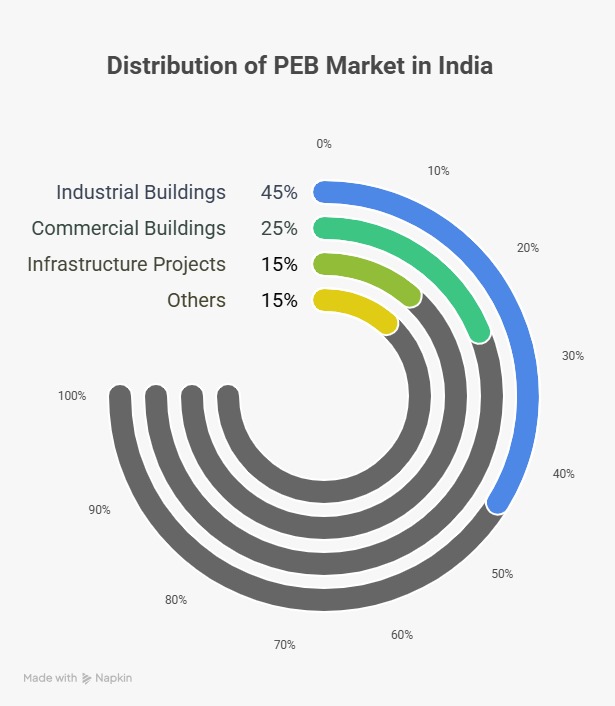Overview
Components:
- Beams & Columns: Hot-rolled or built-up steel sections that bear the vertical and horizontal loads.
- Rafters: Sloped members forming the roof structure, essential for load transfer.
- Rigid Frames: Most common primary framing type, especially for industrial sheds and warehouses.
Key Facts & Industry Trends
1. Demand Driven by Industrial Growth
- Primary frames account for 30–40% of total steel consumption in PEB structures.
- Usage is highest in logistics parks, warehouses, cold storage units, and data centers.
- in E-commerce warehousing and last-mile logistics hubs is pushing structural steel demand.
2. High Strength-to-Weight Ratio
- Built-up sections in PEB frames offer up to 30% steel savings over conventional RCC structures.
- Modular designs enable faster fabrication and erection (up to 40–50% time saved).
3. Customization & Scalability
- Frames can be customized for:
- Clear span buildings (up to 60 meters)
- Crane-supporting structures
- Multi-gable or multi-span buildings
Stats & Charts
Opportunities in the Indian PEB Sector (Primary Framing Focus).
1. Expansion into Tier-2 & Tier-3 Cities
- Demand is growing in smaller cities for industrial parks, warehouses, and smart factories.
2. Government Infrastructure Initiatives
- PM Gati Shakti, Bharatmala, and Make in India push are boosting infrastructure development and increasing steel frame demand.
3. Replacement of Conventional RCC
- Industries are rapidly switching from RCC to PEB for:
- Lower lifecycle costs
- Faster return on investment
- Lower foundation loads
4. Green Construction & Energy Efficiency
- High recyclability of steel and better insulation design in PEB frames align with green building norms.
5. Public Sector Demands
- Expansion in railway stations, airports, metro depots, and logistics terminals using PEB frameworks.



